Bank of Louisiana Building
Introduction
Text-to-speech Audio
Images
This historic bank building now serves as a police building and an information center for tourism.
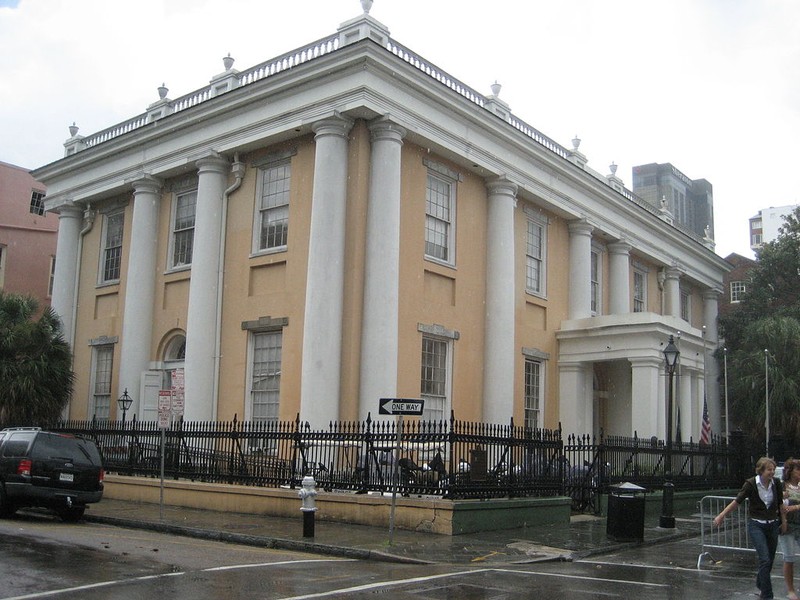
Men standing in front of the bank sometime between 1920 and 1926.
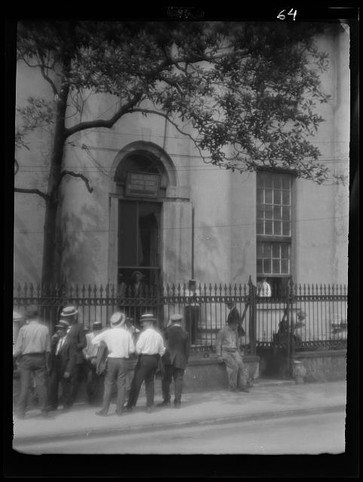
The historical marker that sits outside the old bank building describes its storied past.
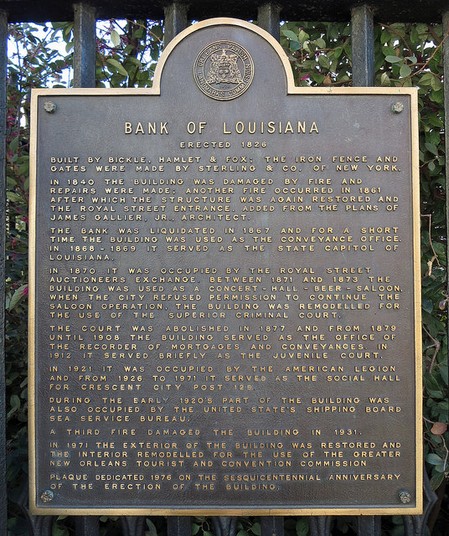
The old bank building when it served as an American Legion hall during the 20th century.
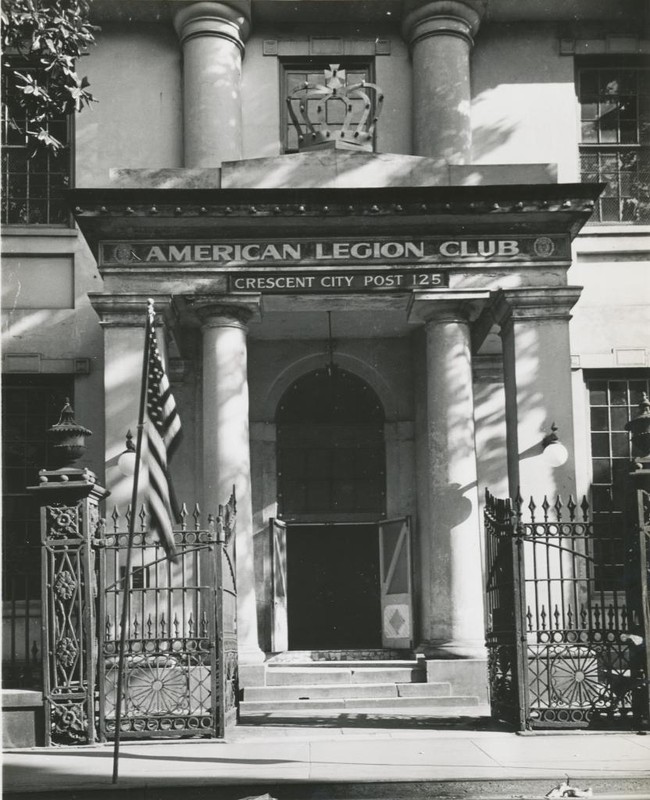
The soaring ceilings are readily apparent in this photo of the interior of the old bank building, as is the police officer of the French Quarter's 8th District.
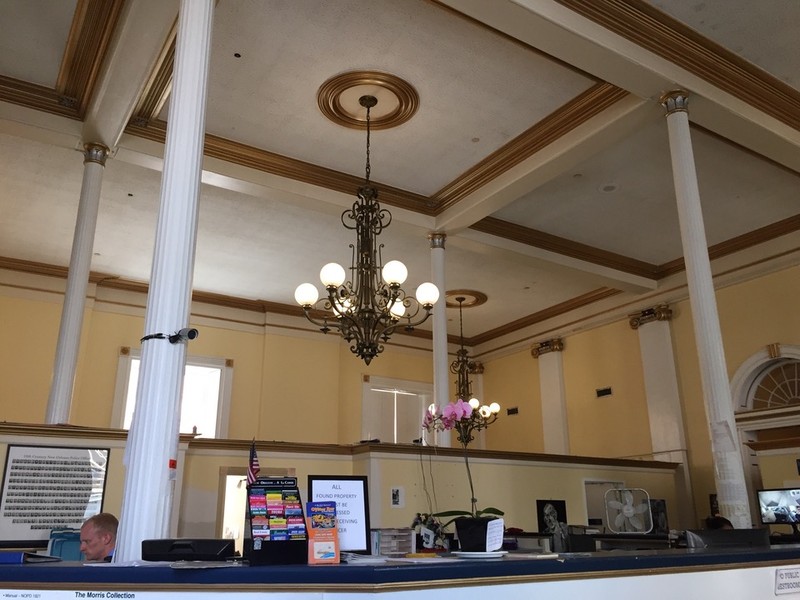
Backstory and Context
Text-to-speech Audio
Designed by the firm of Bickle, Hamblet and Fox, the bank was constructed from 1826-27 with a Roman classical design. Its ornate rod iron fence came from Sterling and Company located in New York. Its Royal Street Greek revival portico was added in 1840 and was designed by Irish-born architect James Gallier. It served as the Bank of Louisiana until it was liquidated in 1867. Since that time it has served numerous functions, to include superior and juvenile courts, the Louisiana State Capitol from 1868-69, a conveyance office, an auction exchange, a beer hall, and an American Legion hall for almost 50 years.
It survived fires in 1840, 1861, and again in 1931. In 1971 its exterior was restored and its interior remodeled for use by the Greater New Orleans Tourist and Convention Commission. It now serves as the French Quarter's 8th District Police Station.
Among the original bank's board members were Julien Poydras, the first delegate to the U.S. Congress from the Orleans Territory, and the eccentric philanthropist John McDonogh, who is well known for endowing much of his fortunes to creating public schools in Baltimore and New Orleans. Like many famous men of their time, these men are famous both for their investments in the city and for their troubling history with slavery.
The bank, however, holds another interesting claim to fame. While there is some debate as to how the South came to be termed "Dixie," one of the theories attributes the title to the $10.00 bills printed by the Bank of Louisiana and another bank, the Citizens Bank of Louisiana. These bills, printed in both English and French, were called "dix" or "Dixies" by English-speaking citizens. Though limited evidence supports this theory, it only adds to the legacy of this building.
Sources
Orleans Parish Landmarks Commission. "Bank of Louisiana." Open Plaques. Accessed February 2, 2017. http://openplaques.org/plaques/39429
"Bank of Louisiana -- New Orleans, LA" Waymarking. March 31, 2007. Accessed February 2, 2017. http://www.waymarking.com/waymarks/WM1C3R_Bank_of_Louisiana_New_Orleans_LA
Maldonado, Charles. "Mayor's office: no plans to move NOPD 8th District at this time." Best of New Orleans. March 15, 2013. Accessed February 2, 2017. http://www.bestofneworleans.com/blogofneworleans/archives/2013/03/15/mayors-office-no-plans-to-move-...
